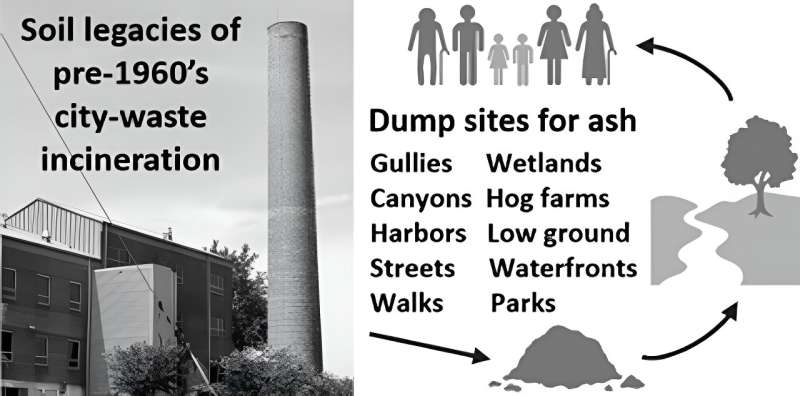Credit: American Chemical Society
Public parks—open, green lawns or idyllic, forested get-aways—help bring nature into cities. But some municipalities built recreational spaces over soil contaminated by industrial activities. Now, in a small-scale study, researchers in ACS' Environmental Science & Technology Letters report elevated soil lead levels in city parks that had housed garbage incinerators and waste ash decades ago. In some cases, the measured levels exceeded the limit considered hazardous by the U.S. Environmental Protection Agency (EPA).
Before the 1950s, many cities in the U.S. and Canada burned garbage, trash, street debris and construction materials at incineration facilities. Some of the waste entering the incinerators, such as tin cans, paint and pipes, contained lead, and then the resulting ash concentrated these hazardous metals. When these sites closed down, some cities converted the land for other uses, such as recreation, by adding clean layers of topsoil. But wind and rain can erode that material, and new landscaping activities can potentially bring up the deeper lead-contaminated layers, increasing the surface soils' lead levels above EPA's threshold of 400 parts per million for children's play areas. So, Daniel Richter and colleagues wanted to examine soil in city parks that were once home to waste incinerators and the ash they produced.
The researchers identified four current city park locations where waste incinerators used to be. Then they collected the top layer of soil from grassy areas, forests and streams throughout the parks. Analyzing the samples revealed different patterns of soil remediation and potential exposures to lead:
- In the public portion of one park, every sample was under the EPA's soil-lead limit and considered safe.
- The other two parks had potentially hazardous lead contamination in multiple samples.
- One cluster of 10 nearby samples exceeded 1,000 parts per million.
- Stream beds and channel walls contained the highest lead levels, ranging from 2,400 to 12,000 parts per million.
To expand their study to other communities, the researchers analyzed historic surveys of municipal waste management. They found that about half of the surveyed U.S. and Canadian cities incinerated solid waste between the 1930s and 1950s. And for six cities, the team showed how city officials could track the conversion of incinerator sites to parks and evaluate the soil for lead-containing ash pollution. The researchers say that this information could provide insights about park visitors' potential lead exposures.
More information: Enikoe Bihari et al, Legacies of Pre-1960s Municipal Waste Incineration in the Pb of City Soils, Environmental Science & Technology Letters (2023). DOI: 10.1021/acs.estlett.3c00488
Journal information: Environmental Science & Technology Letters
Provided by American Chemical Society
























